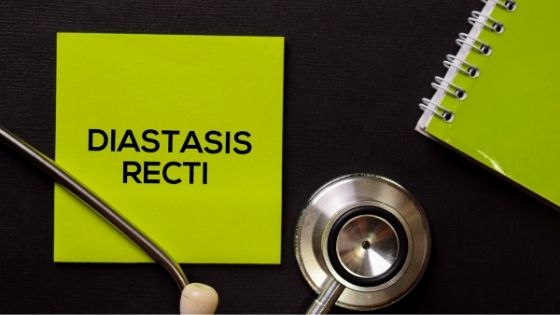Months after giving birth, many women are dismayed when they still can’t fit into their pre-pregnancy jeans. Diet and exercise may not be to blame for a stomach that still looks pregnant long after childbirth. If this sounds like what you are going through, a condition known as diastasis recti may be the reason behind your stomach woes. Learn if you have this condition and what you can do to get a flatter, more toned abdomen.


What is Diastasis Recti?
Diastasis recti is the separation of the abdominal muscles called the rectus abdominus. These muscles meet in the middle of the abdomen and form the midline of the muscles commonly referred to as a six-pack. When these muscles separate, it allows the belly to protrude.
The condition is more than just a frustration. When these muscles separate, only a thin layer of tissue covers the bowels, uterus, and other abdominal organs. Without muscle support, those with the condition are more at risk of developing a hernia and experiencing lower back pain, pelvic pain, poor posture, and urinary incontinence.
Causes of Diastasis Recti
Diastasis recti is caused when there is too much inner-abdominal pressure placed on the abdominal muscles. This is why the condition occurs in approximately two-thirds of pregnant women. During pregnancy, hormones soften the ligaments and joints in the body to accommodate childbirth. As the uterus grows, it is common for the softened tissue in the abdomen to begin to separate as a result of the pressure placed on the muscles. Excessive pushing during a vaginal birth can also cause the condition.
Though diastasis recti is very common in pregnant women, it can occur to anyone. Incorrectly lifting weights, performing unsafe abdominal exercises and yo-yo dieting can cause the condition in men and women who have never been pregnant. Premature babies often present with diastasis recti, but it usually clears up on its own within the first year.
How Diastasis Recti is Diagnosed?
Many people diagnose the condition on their own, but a doctor or physical therapist may also diagnosis you with diastasis recti. To see if you have the condition, lay down on a flat surface. Place one hand behind your head and one hand on your stomach. Place two fingers just above your belly button and gently press down. With your other hand, lift your head and upper body as if you were doing a crunch. While crunching up, feel if there is a gap above your belly button. If you can feel a two-finger gap or more, you may have diastasis recti.
Experts recommend seeing a doctor if you detect an abdominal gap larger than two fingers wide. Your doctor may perform an ultrasound or use a tool called a caliper to accurately diagnose the condition and determine exactly how wide the muscles have separated.
Treatment Options for Diastasis Recti
Some women have been told that diastasis recti can only be repaired with surgery, and this simply isn’t true. The good news is that it is possible to repair diastasis recti through strategic exercises and a healthy diet. By strengthening and repairing the core from the inside, the muscles can be brought back together.
The deepest abdominal muscle is the transverse abdominis. By strengthening the transverse abdomens in combination with exercising the diaphragm and pelvic floor, the abdominal wall can be strengthened and restored. This will help reduce the inner abdominal pressure on these muscles and help the rectus abdominis come back together. This stops the stomach from protruding and decreases the side effects of the condition.
Though it is best to begin these exercises soon after giving birth, women who have suffered from diastasis recti for years can still see major improvements in their stomach muscles with proper treatment.
Those who aren’t yet pregnant don’t need to fear developing diastasis recti. By preparing your body now for pregnancy and childbirth, you can help stop the condition from occurring. Strengthening the inner abdominal wall now through exercise may help stop it from separating during pregnancy and childbirth.
Your body went through a lot during pregnancy and childbirth. It is completely normal for it to take some time for your body to completely heal afterward. Repairing your diastasis recti is a major step in tightening your stomach and feeling confident in your body once again.









